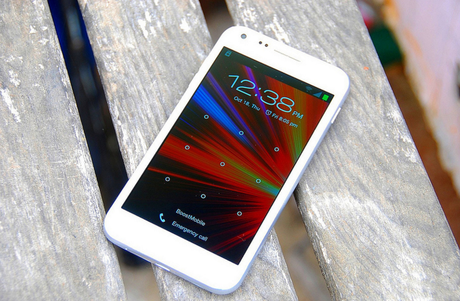 This post is sponsored by Samsung Business. All thoughts and opinions are my own.
This post is sponsored by Samsung Business. All thoughts and opinions are my own.
As the leader of a small or medium-sized enterprise (SME), requiring employees to use their own mobile devices makes sense because it cuts costs. However, SMEs should be aware of security risks and put a mobile device management (MDM) solution in place.
With half of all employers planning to require workers to use their own mobile devices by 2017, this is something most companies need to address now. If yours is concerned about financial implications caused by data leaks from security breaches, I can give you some direction on how to create a MDM strategy for your business.
BYOD Isn’t for Everyone
Start by recognizing that BYOD isn’t right for everyone. Employees such as sales reps and executives are more likely to use their mobile devices for emailing, checking their calendars, and making phone calls. This group makes sense under a BYOD system. However, those who use devices to create content may not be prime candidates for BYOD.
Research MDM Solution Options
Find an MDM solution that’s best for your company’s needs. There’s a wide selection of MDMs to choose from, and it’s worthwhile to do some research. I don’t advise going directly to an MDM salesman to learn about his or her service; instead, reach out to others you know who have experience with MDM solutions, and see what’s working—and not working—for them. You can also research online to find impartial reviews.
Set Limits for Approved Apps
Consider what apps your employees need and what you want to prohibit. Do your own research, since the answer is different for every company. This can be a difficult process, as everyone will have differing opinions and you’ll need to find a compromise that works for most (not all) employees. Try focusing on app features that are acceptable as well as those posing the most security threats, and use this as a way to limit acceptable apps.
Increase Your IT Support
As the number of personal devices being used in the workplace rapidly increase, it’s common for the IT department to remain the same size or be downsized. Small businesses may only hire one IT employee responsible for managing all the electronics for the company. It’s actually worth the investment to ramp up your IT department if you want to save on BYOD. Reserving a few pennies isn’t worth the security risks you face by having numerous unprotected smartphones and tablets in-house, all carrying sensitive data on them. Many businesses have found outsourcing IT support to be a cost effective way to remain protected.
Create a BYOD Policy
Draft a BYOD policy and ensure all employees adhere to it. These regulations must be vetted through IT as well as Chief security officers, the legal department, communication directors, and the CEO. The policy should cover rules, guidelines, and privacy restrictions. Everyone needs to sign off on it.
Now that you have a BYOD policy and an MDM system, make sure they sync up. Work with IT to ensure your MDM preferences are set up to recognize third-party app reputations, work with the approved program, and block unapproved downloads.
Unveil Your BYOD Program
It’s finally time to launch your BYOD program throughout your organization. I suggest holding a workshop with employees to review the policy and make sure everyone understands the details of the plan. Explain why BYOD is best for the company. Review what devices and apps are allowed, and point out how these rules will be enforced.
Have an off-boarding process that covers how devices will be cleaned when an employee leaves the company. If your enterprise is large, consider a roll out plan in phases. Start with a pilot group on fewer than 1,000 devices. This will be a manageable collection for IT to test on and work out any wrinkles before deploying your program company-wide.
Now that you have your BYOD system in place, you’ll need to maintain it. Host regular reviews of the system schedule for updates and improvements. Mobile devices are constantly changing, and you’ll need to stay updated on new features to remain competitive and secure. This is another reason to expand your IT department; you’ll need the manpower to stay current.
Once these steps are in place, your business will be in position to run smoothly with the right employees using their own devices to save on overhead. Company data is secure and protected, and IT monitors workflow, looking for areas that need improvement to keep the enterprise updated with the latest technologies.
Additional Resources on this Topic:
Mobile Application Security: Mobile Device Management (MDM)
Are We Considering Mobile Security When Developing A Mobile Strategy?
Manage Mobile Device Fraud without Succumbing to Mobilephobia
BYOD Done Right is a Win-Win
Mobile Security: Move Beyond The Basics And Overcome Mobile Paralysis
10 Reasons to Secure your Enterprise with Samsung Knox
For more content like this, follow Samsung Business on Insights, Twitter, LinkedIn, YouTube and SlideShare.
photo credit: Samsung Galaxy S II via photopin (license)
A version of this post was first published on MillennialCEO.

